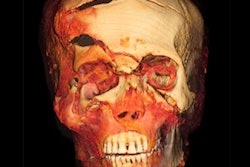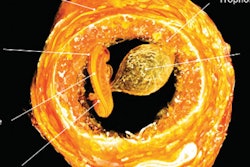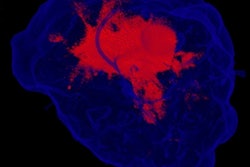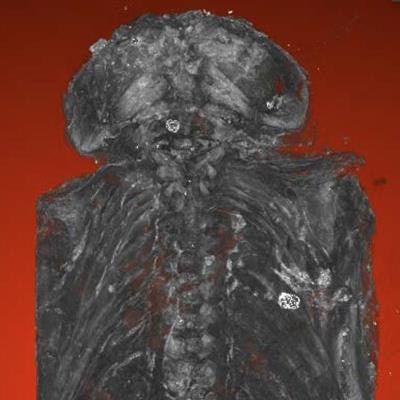
When an international team of researchers acquired micro-CT scans of what they believed was a mummy of an Egyptian hawk, they discovered instead that it was a human fetus.
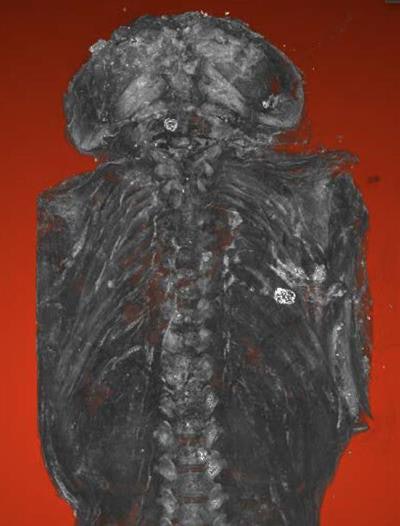 Micro-CT scan of the male fetus. Image courtesy of Maidstone Museum and Nikon Metrology.
Micro-CT scan of the male fetus. Image courtesy of Maidstone Museum and Nikon Metrology.The researchers, led by bioarchaeologist and mummy expert Andrew Nelson, PhD, of Western University in Canada, examined high-resolution micro-CT scans of the mummy.
They found that it was a male fetus with several congenital health abnormalities, including anencephaly, a rare condition in which the brain and skull do not develop properly.
The fetus' previous label as a mummified hawk from the Ptolemaic Period has been changed to reflect this discovery at its home in the Maidstone Museum in the U.K.





